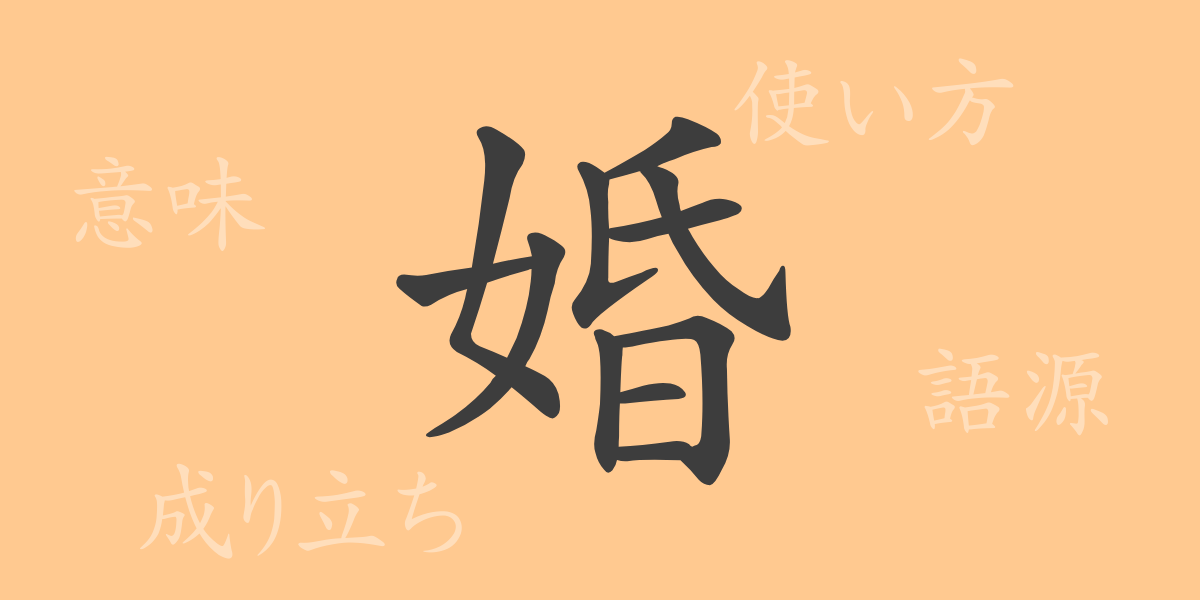When the bride changes from a traditional white kimono to a wedding dress, many are captivated by her beauty. But how much history and meaning are embedded in the single kanji “婚(こん, kon)” that shines in that moment? Let’s explore the story behind the commonly used Japanese kanji “婚(こん, kon)” and its deep-rooted usage in our daily lives.
Origin of 婚(こん, kon)
The kanji “婚(こん, kon)” was historically used to signify the marriage ceremony. This character is composed of two parts: “女(おんな, onna)” meaning woman, and “昏(こん, kon)” meaning dusk. It symbolizes the tradition of women being welcomed into a new family at dusk. In ancient China, weddings often took place in the evening, hence “昏(こん, kon)” came to represent marriage.
Meaning and Usage of 婚(こん, kon)
The kanji “婚(こん, kon)” refers to various aspects related to marriage. Specifically, it signifies getting married, matters related to marriage, or the state of being married. Commonly, it is seen as part of the word “結婚(けっこん, kekkon)” which means marriage. It is also used in words such as “婚約(こんやく, konyaku)” meaning engagement and “新婚(しんこん, shinkon)” meaning newlyweds.
Reading, Stroke Count, and Radical of 婚(こん, kon)
The kanji “婚(こん, kon)” has specific readings and structure closely tied to our lives.
- Reading: The on’yomi (音読み) is “コン(kon)” with no specific kun’yomi (訓読み).
- Stroke count: It consists of 11 strokes in total.
- Radical: The radical is “女(おんな, onna)” which means woman.
Idioms, Phrases, and Proverbs Using 婚(こん, kon)
Idioms and phrases containing “婚(こん, kon)” are cherished as words symbolizing significant life milestones. For example:
- 結婚(けっこん, kekkon): The act of getting married.
- 婚約(こんやく, konyaku): The promise made with the intention of marriage.
- 新婚(しんこん, shinkon): Refers to newlyweds.
- 婚活(こんかつ, konkatsu): Activities aimed at finding a spouse.
These terms are essential expressions when referring to the important life event of marriage.
Conclusion on 婚(こん, kon)
The kanji “婚(こん, kon)” holds deep meanings beyond being just a character, playing a significant role in our culture and history. It is a mirror reflecting the emotions of people and the evolution of society, centered around the life event of marriage. Understanding the meaning embedded in this single character can deepen our insight into human relationships and the structure of society.

























